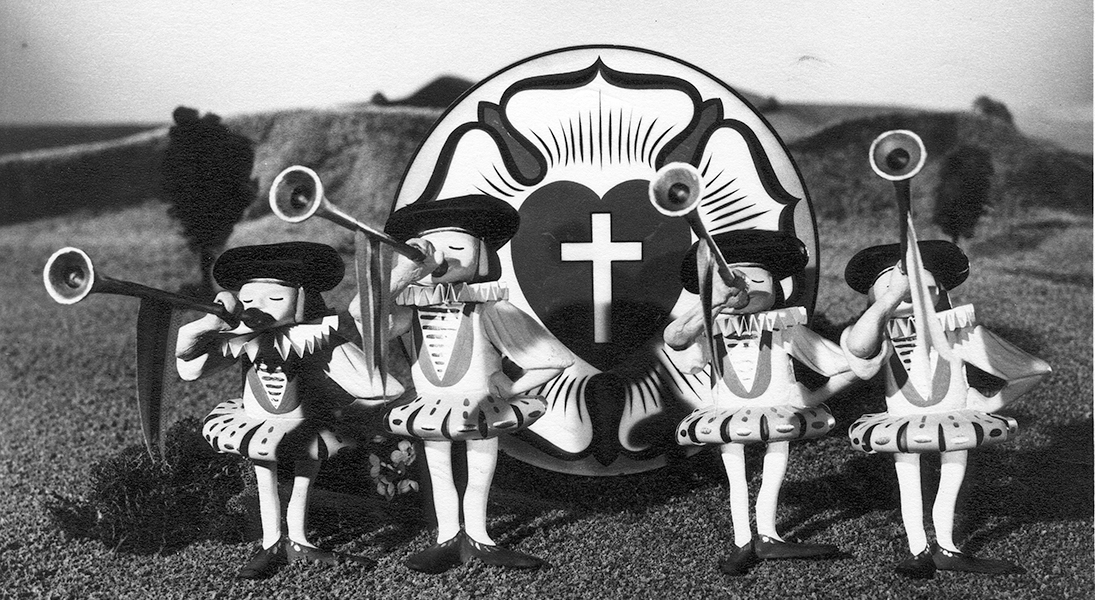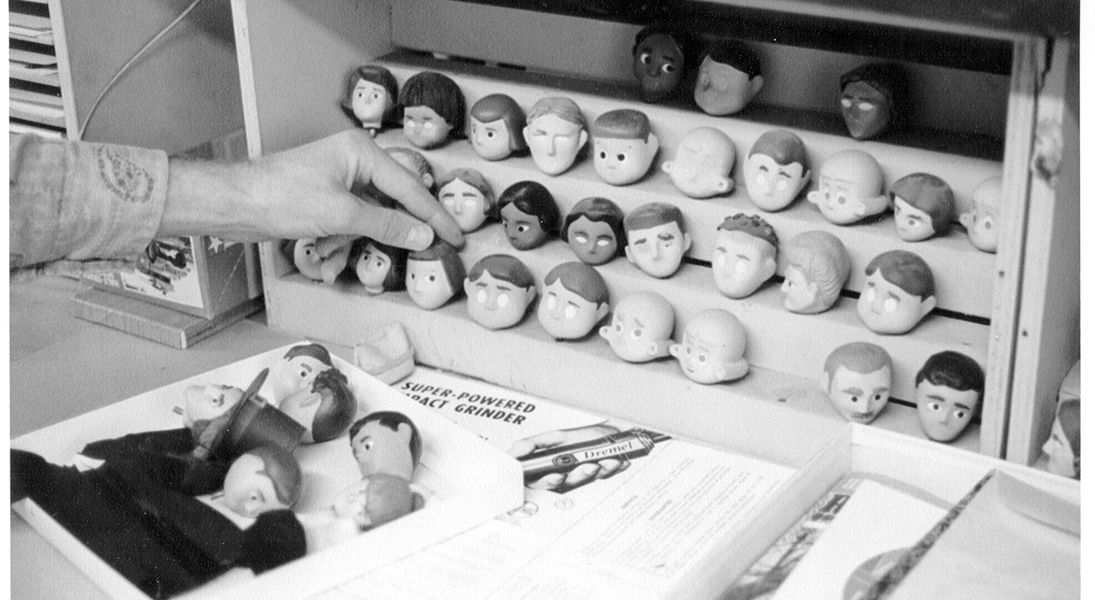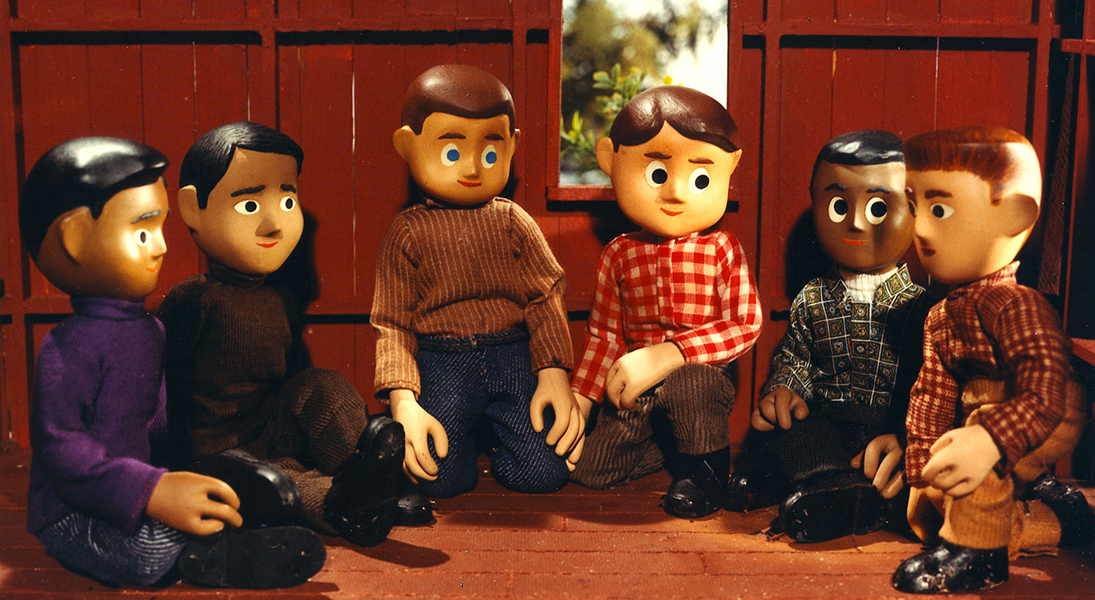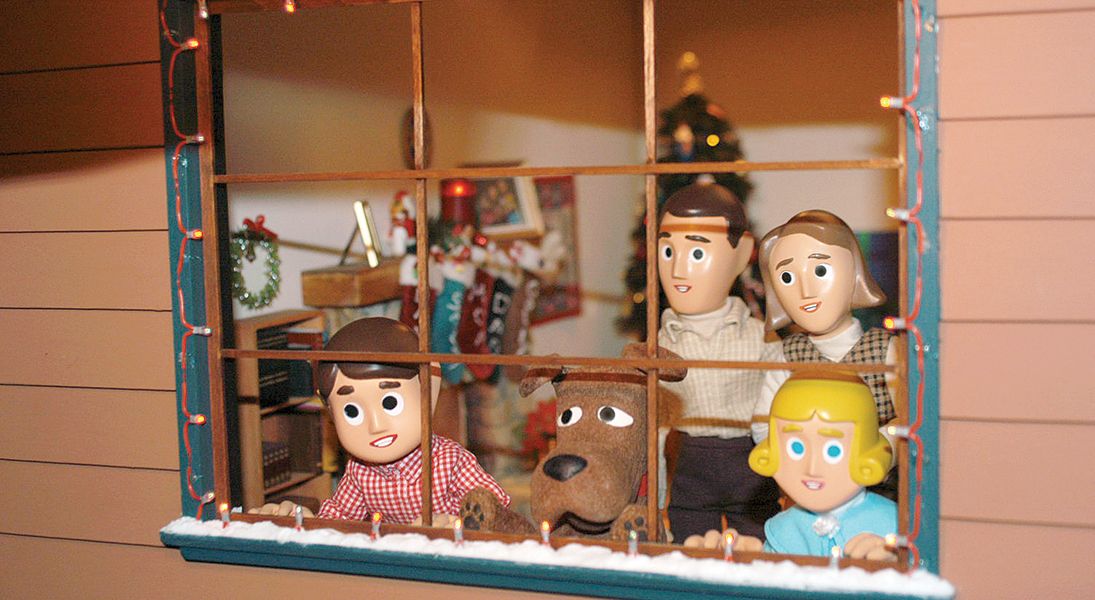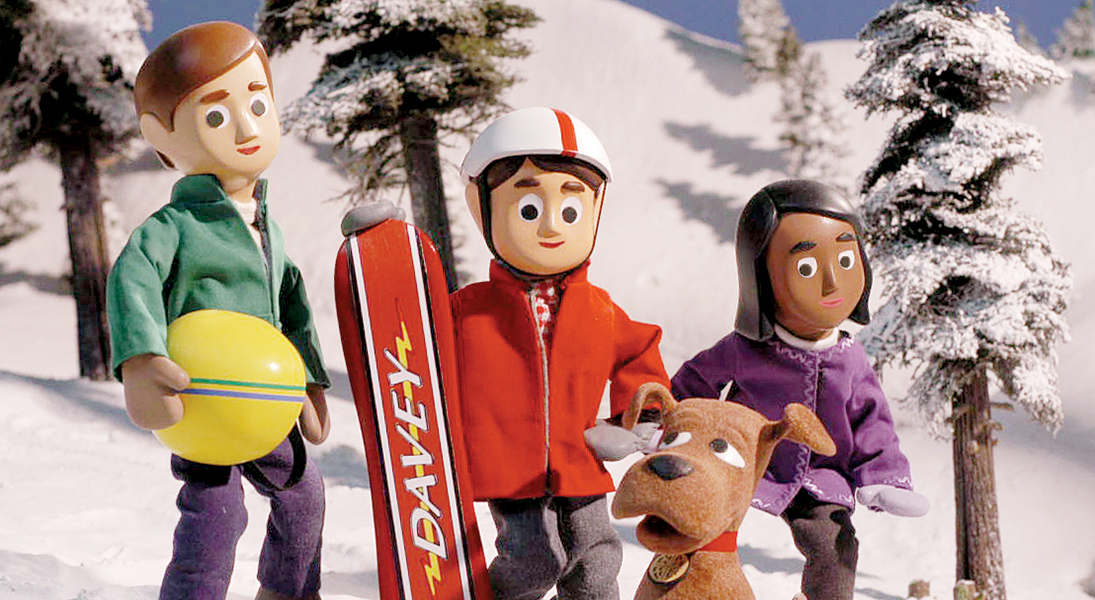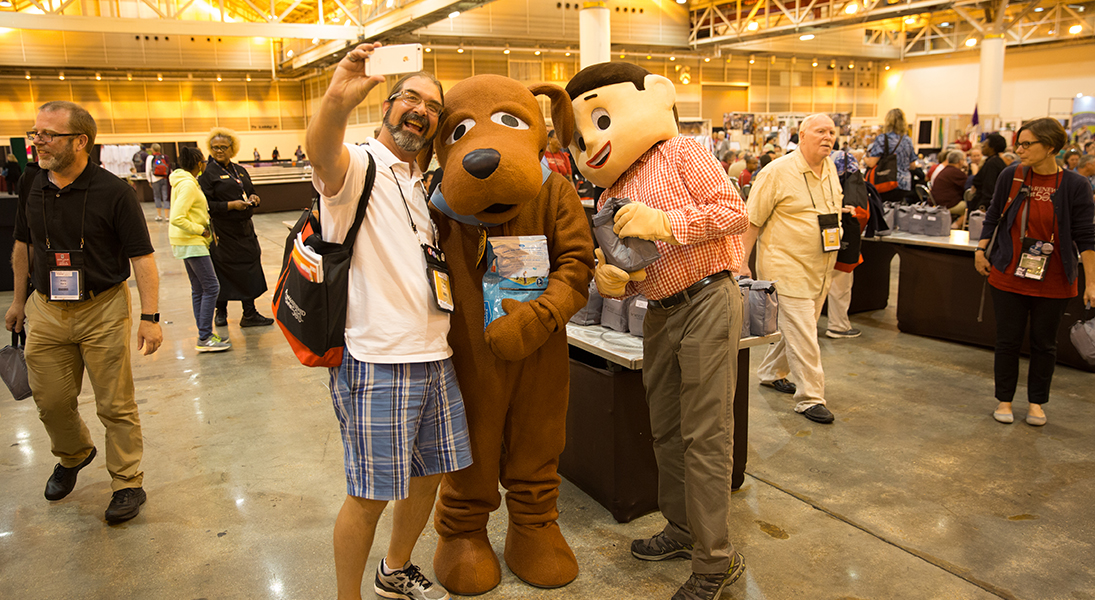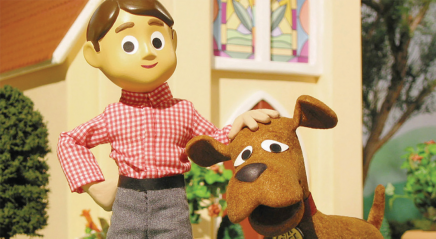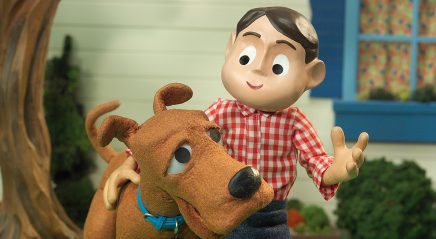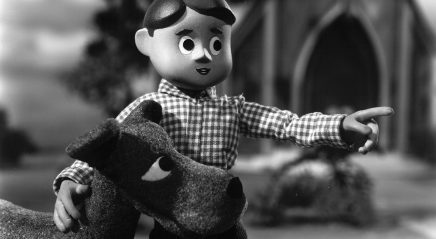For many children of the 1960s and 1970s, it’s a familiar scene: Sunday morning sunlight pours in through the window as you sprawl out on the living room floor. Some families busy themselves as they get ready for church—you may even already have on your Sunday best. From the family TV, a familiar voice bellows: “Oh, Daaavey.”
The voice belonged to young Davey Hansen’s talking dog, Goliath, in the stop-motion animated series Davey and Goliath, a perennial TV staple. The program, conceptualized by the United Lutheran Church in America (ULCA) and Clokey Productions Inc.—headed by Gumby creators Art Clokey (1921-2010) and Ruth Clokey (1923-2008)—premiered 60 years ago, in February 1961.
Some audiences—Lutheran or not, religious or not—knew of its connection to the Lutheran church; others didn’t. But for millions of people around the world today, including many Lutherans, Davey and Goliath’s legacy endures.
In 1958, ULCA President Franklin Clark Fry (1900-1968) designated $1 million of the church budget to fund the production of a TV program. The ULCA contracted with the Clokeys, who had already had success with the creation of the iconic stop-motion animated character Gumby, to create a children’s show, Davey and Goliath.
An active ULCA member and the daughter of a Lutheran pastor, Ruth Clokey began her career producing religious programs for the Lutheran church in the 1940s. She met Art at Hartford (Conn.) Seminary, where they both attended and were interested in creating faith-based films.
The Clokeys and the ULCA landed on a series centered around the Hansen family: parents Elaine and John, sister Sally, brother Davey—who was initially 10 years old but aged as the show continued—and Goliath, who served as Davey’s conscience and whom only Davey could hear talk. In a typical episode, Davey would find himself in a bind and Goliath would guide him through it, facing situations where faith in God would help the characters overcome a challenge.
An ambitious undertaking
Although God was frequently mentioned and the family attended church, the series wasn’t explicitly Lutheran. Many Lutheran viewers, however, would recognize the show’s theme song as Martin Luther’s famous hymn “A Mighty Fortress Is Our God” and notice the Luther rose in the opening and closing credits. Scripts were written by children’s book author Nancy Moore in consultation with the church.
“We use a series of parables, the same device Jesus used to speak to all depths of understanding and all degrees of comprehension simultaneously,” Richard Sutcliffe (1918-2008), then-ULCA associate director of the Department of Press, Radio and Television, said in a 1961 interview (Gumby Imagined: The Story of Art Clokey and His Creations; Dynamite Entertainment, 2017). “These are placed in modern settings and use situations and language today’s generation knows.”
While the stories were being developed, preproduction began at the Clokey Productions studio in Glendora, Calif. Using the same stop-motion animation process Art Clokey pioneered with Gumby—in which objects and characters are moved incrementally between photographed frames so they appear to be in motion—the crew created steel ball-and-socket armatures covered in foam rubber for the characters, with dozens of facial movement pieces for the heads that were often swapped out for each frame. Unlike Gumby, though, Davey and Goliath required realistic sets and costumes for its real-world setting.
A study by the American Research Bureau concluded that the show was seen by 5.1 million people a week on commercial TV.
On Feb. 25, 1961, the show premiered in syndication with its first 15-minute episode, “Lost in a Cave.” Between 1961 and 1967, 39 episodes and four 30-minute holiday specials would air. Episodes of the show were given, free of charge, to nearly 200 television markets in North America. The series also appeared overseas, including Spanish, Portuguese, Dutch and Cantonese translations.
In 1962, the ULCA merged with other churches to form the Lutheran Church in America (LCA), which took over funding of the series. Between 1971 and 1975, the LCA funded another run of 27 episodes and two 30-minute specials. In addition to the spiritual themes of the earlier episodes, the 1970s stories deal with integration, racism, violence and other topical issues. Now in junior high, Davey faced more complex situations.
In interviews, Ruth often pointed to 1961’s “The Polka-Dot Tie” as her favorite episode for the ways it dealt with race and inclusion (according to her, it was met with resistance by some networks). The 1970s episodes dove deeper into the topic, and the series was one of the first on TV to feature integrated minority main characters.
According to Gumby Imagined, a 1973 study by the American Research Bureau concluded that the show was seen by 5.1 million people a week on commercial TV. Other studies showed that “churched and unchurched” child viewers showed significant gains in their identification of religious values after watching the show.
Davey and Goliath return
In 1988, the LCA joined with the American Lutheran Church and the Association of Evangelical Lutheran Churches to form the ELCA, which would hold all rights to Davey and Goliath going forward. Throughout the 1990s, the show was referenced in some of the most popular Generation X-focused pop-culture properties.
In 2001, the advertising agency BBDO contacted the ELCA about featuring the characters in a campaign. After a nearly 30-year hiatus, a new Mountain Dew commercial in which Davey and Goliath star aired.
“The commercial was part of our plan to introduce the characters to a new generation, and it worked,” said Eric Shafer, then director of ELCA Communication Services.
The characters were also brought in costume to the 2003 ELCA Youth Gathering and received an enthusiastic response, said Shafer, now pastor of Mount Olive Lutheran Church in Santa Monica, Calif. “When they came on stage, this whole younger generation knew who they were.”
Following the commercial, the ELCA produced a one-hour documentary special, Oh Davey! History of the Davey and Goliath Television Series, which was broadcast on ABC-TV affiliates in 2003. The hope was that the momentum would lead to a new era of Davey and Goliath, Shafer said.
“Especially in these times, when virtues like these are not promoted in public media as much, [it’s noteworthy that] Davey and Goliath stood for kindness and goodness and inclusivity and the love of God for all people.”
Royalties from the Mountain Dew ad funded the production of a 60-minute Davey and Goliath special, which would ultimately air as Davey and Goliath’s Snowboard Christmas on the Hallmark Channel in 2004.
Clokey Productions produced the special—creating new figures and sets for the project—with Ruth and Art’s son, Joe Clokey (1962-2018) producing and the ELCA guiding the story. The episode returned to the series’ focus on spirituality and inclusion—this time introducing Davey’s friends Sam, a Jewish boy, and Yasmeen, a Muslim girl.
While Davey comes to better understand the true meaning of Christmas, he also learns more about respecting other traditions—and finding similarities, despite different backgrounds. ELCA staff worked with Jewish and Muslim scholars on the script, Shafer said.
Although Snowboard Christmas was the last Davey and Goliath episode produced—at least, for now—the series’ characters, and the themes it explored across decades, remain potent for today’s audiences.
“Especially in these times, when virtues like these are not promoted in public media as much, [it’s noteworthy that] Davey and Goliath stood for kindness and goodness and inclusivity and the love of God for all people,” Shafer said. “It showed this to all people—some for the first time—on national TV. That’s a theme that I’m so proud the Lutheran church has been involved with.”




